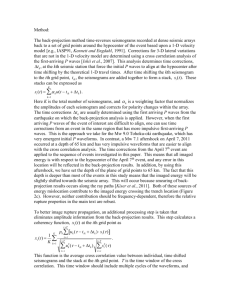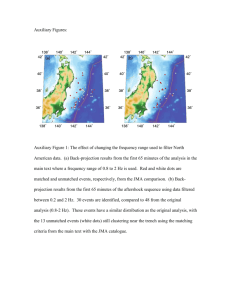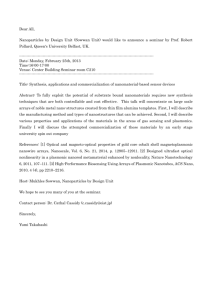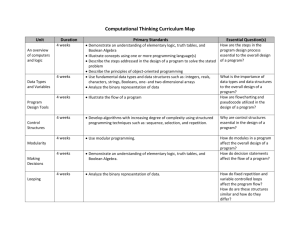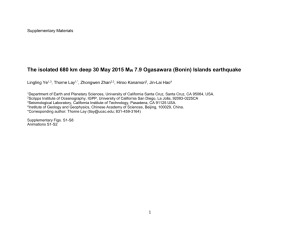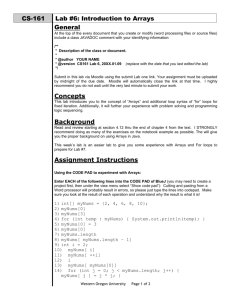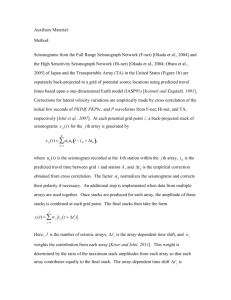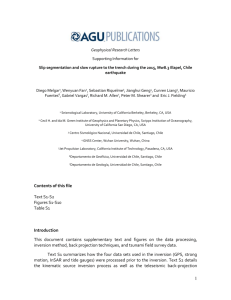grl53922-sup-0001-supplementary
advertisement
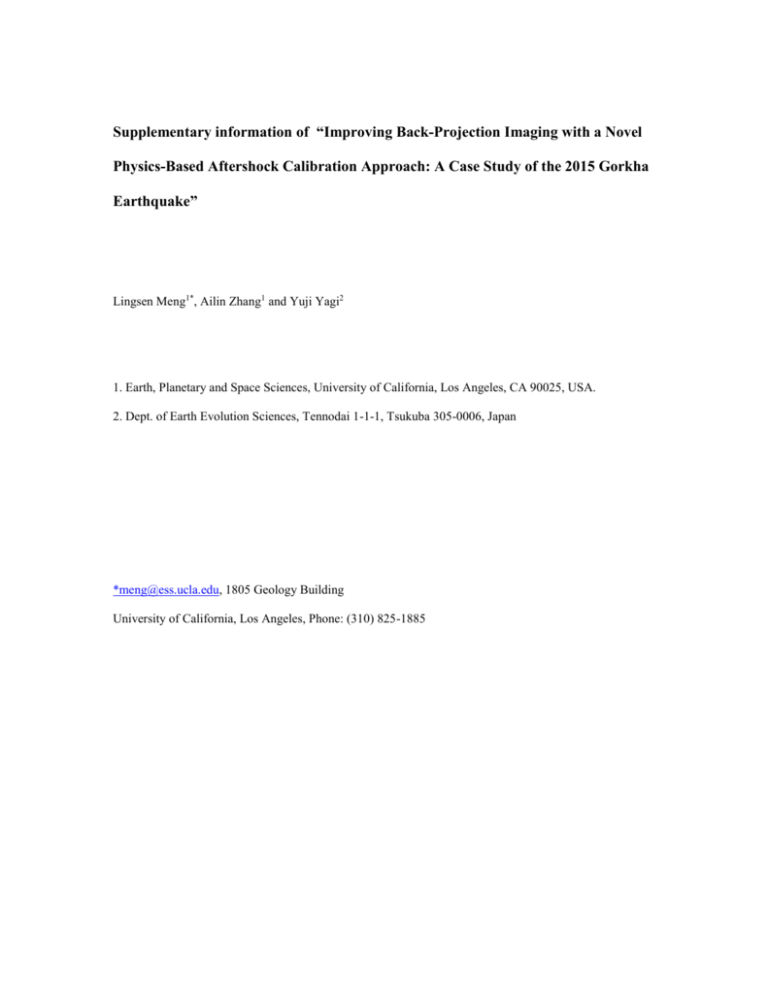
Supplementary information of “Improving Back-Projection Imaging with a Novel Physics-Based Aftershock Calibration Approach: A Case Study of the 2015 Gorkha Earthquake” Lingsen Meng1*, Ailin Zhang1 and Yuji Yagi2 1. Earth, Planetary and Space Sciences, University of California, Los Angeles, CA 90025, USA. 2. Dept. of Earth Evolution Sciences, Tennodai 1-1-1, Tsukuba 305-0006, Japan *meng@ess.ucla.edu, 1805 Geology Building University of California, Los Angeles, Phone: (310) 825-1885 Figure S1: The inset shows vertical component seismograms of the European (EU), Australian (AU) and North American (NA) arrays filtered from 0.5 to 2 Hz, aligned on their first P arrival and normalized by the standard deviation of their first 10 s. Figure S2. Synthetic tests of kinematic rupture models. The colored squares in the left and right columns shows the back-projection of a unilateral rupture of five uniform sources (stars) before and after the slowness correction, respectively. The top, middle and bottom rows show the results of the AU, NA and EU arrays. The squares are colored by time and sized by power. Figure S3. The back-projections with a single-aftershock correction. Symbols denote backprojection radiations imaged by different arrays, (a) and (b) compare aftershock locations inferred from back-projection with catalogue location before (a) and after (b) slowness correction. The stars show NEIC catalogue locations of the M6.7 aftershock, with symbols (circle, square and diamond) denoting apparent back-projection locations imaged by the AU, NA and EU array. (c) and (d) show the mainshock back-projections of different arrays before and after correction. (e) show rupture patterns of three arrays color-coded by time. Triangles with white edges are comprehensive back-projection results combining all three arrays. Magnitude M5.5 Origin time 5/12/15 7:17 lat0 27.88 M6.7 4/16/15 7:09 27.78 M6.3 5/12/15 7:36 27.62 M5.7 4/25/15 6:18 27.55 Network lon0 85.75 AU NA EU 86 AU NA EU 86.17 AU NA EU 86.08 AU NA EU lat1 27.71 27.88 27.83 27.74 27.83 27.8 27.56 27.6 27.64 27.5 27.56 27.56 lon1 85.87 85.86 85.5 86.1 85.97 85.82 86.3 86.2 85.93 86.36 86.29 85.88 lat2 27.89 27.82 27.85 27.82 27.76 27.79 27.67 27.72 27.67 27.61 27.59 27.62 lon2 85.7 85.77 85.67 85.92 86.04 86.01 86.18 86.16 86.13 86.22 86.11 86.12 Table S1: Origin and location parameters of the calibration aftershocks. The latitude and longitude numbered by 0, 1 and 2 denotes the epicenter location of the ISC catalog, the apparent source location inferred from BP and source location inferred from BP with the slowness calibrations.

